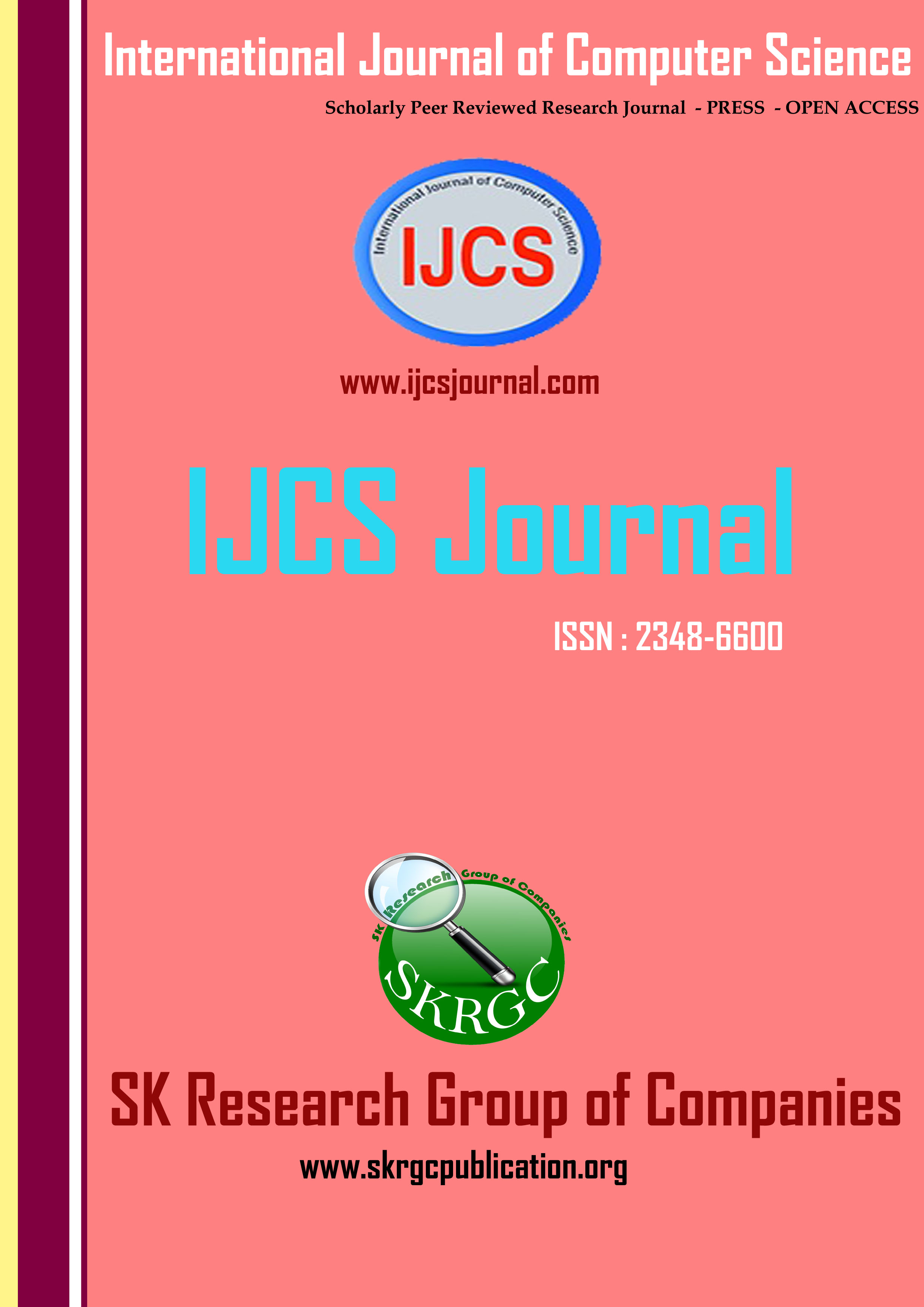Novel Decentralized systems for data publishing by trusty URI links
International Journal of Computer Science (IJCS) Published by SK Research Group of Companies (SKRGC)
Download this PDF format
Abstract
To make digital artifacts (undesired or unintended alteration in data introduced in a digital process by an involved technique and/or technology) such as datasets, code, texts, and images verifiable and permanent. Digital artifacts that are supposed to be immutable, there is moreover no commonly accepted method to enforce this immutability. To solve this problem, we propose trusty URIs containing base 64 encryption values.Base64 encoding can be helpful when fairly lengthy identifying information is used in an HTTP environment. For example, a database persistence framework might use Base64 encoding to encode a relatively large unique id (generally 128-bit UUIDs) into a string for use as an HTTP parameter in HTTP forms or HTTP GET URLs. It makes the contents of the data trustworthy which is sent as a URI to the user and it make sure whether it is trusted or not We show how trusty URIs can be used for the verification of digital artifacts, in a manner that is independent of the serialization format in the case of structured data files such as nano publications .Our goal is to achieve a data security and make the content present is immutable thereby extending the range of verifiability to the entire reference tree. Even the file with large content it becomes possible to implement in enhancing data’s on the web and it is fully compatible with existing standards and protocols.
References
[1] T. Kuhn and M. Dumontier, “Trusty URIs:Verifiable, immutable, and permanent digitalartifacts for linked data,” in Proc. 11th ExtendedSemantic Web Conf., 2014, pp. 395–410.
[2] P. Growth, A. Gibson, and J. Velterop, “Theanatomy of a nanopublication,” Inf. Serv. Use, vol.30, no. 1, pp. 51–56, 2010.
[3] Farrell, Kutscher, C.Dannewitz, B.Ohlman,A.Keranen, and. Hallam-Baker, “Naming thingswith hashes,” Internet EngineeringTaskforce(IETF),StandardsTrackRFC6920,Apr.2013
[4] R. Hoekstra, “The MetaLex document server,”in Proc. 10th Int. Conf. The Semantic Web, 2011,pp. 128–143.
[5] M. Altman and G. King, “A proposed standardfor the scholarly citation of quantitative data,” DlibMag., vol. 13, no. 3, p. 5, 2007
[6] M. Bartel, J. Boyer, B. Fox, B. LaMacchia, andE. Simon, (2008, Jun.). XML signature syntax andprocessing. W3C, Recommendation. [Online].Available: https://www.w3.org/TR/xmldsig-core/ [7] J. Carroll, “Signing RDF graphs,” in Proc. 2ndInt. Semantic Web Conf., The Semantic Web,2003, pp. 369–384.
[8] E. H€ofig and I. Schieferdecker, “Hashing ofRDF graphs and a solution to the blank nodeproblem,” in Proc. 10th Int. Workshop UncertaintyReasoning Semantic Web, 2014, pp. 55.
[9] M. Bellare, O. Goldreich, and S. Goldwasser,“Incremental cryptography: The case of hashingand signing,” in Proc. 14th Annu. Int. Cryptol.Conf., Adv. Cryptol., 1994, pp. 216–233.
[10] C. Sayers and A. Karp, “Computing thedigest of an RDF graph,” Mobile and MediaSystems Laboratory, HP Laboratories, Palo Alto,USA, Tech. Rep. HPL-2003-235(R.1), 2004.
[11 ] R. Phan and D. Wagner, “Securityconsiderations for incremental hash functions basedon pair block chaining,” Compute. Security, vol.25, no. 2, pp. 131–136, 2006.
Keywords
Decentralized systems, data publishing, Semantic Web, linked data, resource description framework, nanopublications.

